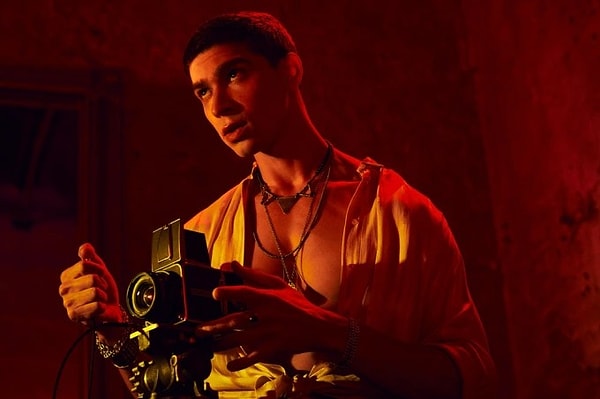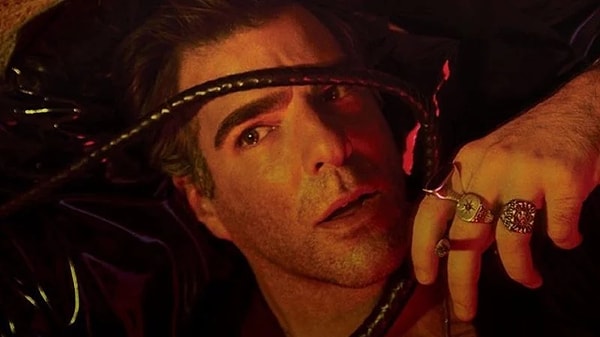Every Historical Reference in American Horror Story: NYC
If there was ever such a thing as an American Horror Story, it would be New York in 1981. From the first shot of the first episode of the season, we see an unrecognizable metropolis, free of the gentrified apartments, coffee shops, overpriced restaurants, and the air of controlled cleanliness that most of us have come to expect. The sidewalks were lined with walls of trash bags, palettes, and cardboard boxes. Rats would flit back and forth, feeding on the rotting filth that had spread a horrific stench throughout the island.
It was a bloody time. The murder rate was higher by orders of magnitudes. There were 120,000 reported robberies and probably 120,000 more that had gone unnoticed. Nearly everyone had a tale about how they were violated, beaten, or mugged. This was largely due to the crack epidemic, a rabid feeding frenzy that brought lines of cars into the ghetto, like demented drive-thrus. It had turned the city's inhabitants into a vicious pack of wolves. They'd do anything to satisfy their monolithic cravings--go door to door, break into buildings, cars, anything that was left unlocked or unprotected. They traveled in packs, taking over subway cars, alleyways, and abandoned buildings--anywhere they could get high, rest their heads, then prepare for more.
It's the city of legend, a symbol of a world gone wrong. It no longer exists, but its stain has seeped into the shallow fabric of our collective unconscious, leaving behind the smell of rotting garbage, and visions of mohawks, graffiti, and switchblades. It's simply too vile and too horrific to be washed away. New York will never live that reputation down. The island has been tainted with it.

Courtesy of FX via Hulu
Lost, Abandoned, and Hungry
Society at that time was straddling the fence between piety and modernity. On the one hand, the sexual revolution had taken hold of the writhing masses who stalked the bars, binging on coke and liquor. They didn't think. They didn't care. They danced, fucked, and took everything in sight. But there was also a staunch, Christian culture that permeated everything. Everyone had their favorite pastor, their church, and their denomination; people believed, even gays.
So they'd spend their days obsessing over forbidden fruit, suppressing themselves, deepening their voices, and changing their mannerisms. They lived inside a pressure cooker, building up tension until they exploded, and they exploded with style. There were sex shops, dive bars, cruise spots, and bathhouses--an entire industry based on the fact that they would need somewhere to go when they couldn't take it anymore.
They'd traipse through the fog in bathhouses, taking whoever they wanted, building trains of sweaty flesh. At the bars, there'd be a look, a nod, and they'd be in the alley. It was a buffet--promiscuity on a scale unseen in modern times. Gay men still reminisce about the way things had been. It might even be called the height of a dead culture. There were icons like the leatherman, twinks, and jocks. There was slang passed around, words to use to let men know what you wanted--a way of telling someone you were gay without actually telling them. The parties were legendary. In the series they showed an event in a warehouse where men wore powdered wigs, dancing to strange music while they inhaled piles of cocaine. Those parties existed. Many of Manhattan's most well-known gay figures were promoters who organized nightly bacchanalias. Michael Alig and his club kids were a part of a long line whose craft had grown to the level of art long before they hit the scene.

Courtesy of FX via Hulu
Killers
In a city where nobody was safe, and the mainstream culture valued masculinity, gay men wore targets on their backs. Teenagers and thugs would hang outside bars, pick people off, lure them into alleyways, beat them, violate them, or rob them. This had always been a problem, of course. But the crime in the city was much worse, and it was getting difficult to walk around, especially at night.
At a certain point, it became more than just thugs and gangs. Word got out that there was a serial killer targeting gay men, and it became a civic issue. In episode one, a closeted police officer named Johnathan tells his boyfriend Gino that they were finding bags filled with human remains floating in the Hudson. This is a reference to the Bag Murders, which occurred between 1975 to 1977 when the dismembered remains of six men were found in the river. Some of them appeared to have been wearing leather clothing items that could be traced back to a shop in Greenwich Village. It was assumed at that point that all of the men involved in the killings were gay.
A reporter from the Village Voice, Arthur Bell, seized on the murders as an opportunity to highlight the violence in the gay community at the time. It was the kind of reporting that made waves. It was obvious that the community was targeted--and not just during this killing spree. When he pointed out that it was largely because of discrimination and prejudice, nobody could argue with him. He was right. It was a huge step forward for the gay rights movement.

Gino Barelli, Courtesy of FX via Hulu
Arthur Bell also claimed that the NYPD had failed to file reports of other murders that had transpired. He believed, like Gino, that the police didn't want to help because of inherent prejudice. Gino is partially based on Bell, who ultimately ended up finding a man that confessed to the murders, Paul Bateson. It is unclear whether or not Bateson committed the crimes, but he did kill Bell's friend Addison Verrill, a film reporter.
In the series, Gino goes to a piano bar called the Brownstone, where he's drugged and taken back to a killer's apartment. There he wakes up and finds himself gagged and tied up. The killer, whose last name is Whitely, is using medical equipment--a tray, syringes, gauze, and scissors--which seemed to have come from a hospital. These scenes are based on the Last Call Killer, Richard Rogers, who was active in the 70s, 80s, 90s, and possibly the 60s.
Like Dahmer, Rogers lured men back to his apartment, where he would drug them and kill them. Gino's captivity mirrors the experiences of two of his victims, one from 1988 and another from 1998, who woke up during the incident. For whatever reason, like Whitely, Rogers decided to get them dressed and set them loose--though it's unclear why. Rogers wasn't caught until 2001, and the NYPD has long been accused of stalling the investigation. In fact, they weren't able to find proof of Rogers' involvement until one of the victims' wives hired a private investigator and started hounding detectives.

Whitely, Courtesy of FX via Hulu
The Virus
In the series, Billie Lourd's character stood over a microscope observing a strange mutated disease that had infected the deer in Fire Island. She had all of them killed off, afraid that it would spread to humans--if it hadn't already. She came back to her office to find a waiting room filled with patients who all had a rash similar to the one caused by HIV. Later, the club promoter at the warehouse party came onstage and announced that it was the end of time, and death was their dinner companion.
It was poetic, but also scathing, considering the fact that 1981 was the year that the AIDS virus first became known to the public. It began with a story written by Lawrence Mass in the New York Native--the same newspaper where Gino Barrelli worked in the series; it read 'Disease Rumors Largely Unfounded,' and it mirrored New York's stance that there was no disease spreading through the community. At the same time, the CDC was running studies on the pattern of gay men who were being treated for strange pneumonia, and the New York Times was working on a story of its own.
The slaughter that would ensue would take tens of millions of lives. We can't be certain if the virus in the series is in fact HIV. The Fire Island incident was made up, and there's no evidence that it was used by the American government to kill off the gay community. But there are similarities between the two, and Ryan Murphy has spoken quite a bit about the impact the AIDS crisis had on his life. He lost many people during that time, and he claims that it was responsible for his drive to succeed. He's already made one series about the virus, and he's dropping hints. If he doesn't speak about it directly, he will still probably end up using it as a plot point.
Keşfet ile ziyaret ettiğin tüm kategorileri tek akışta gör!

Send Comment